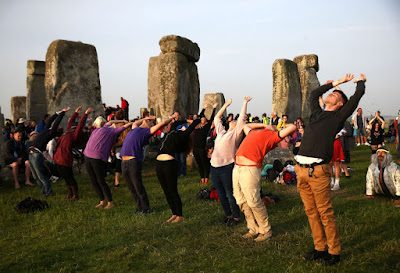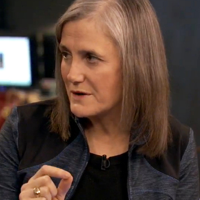
WHAT IS A SUTRA? A sutra is a "thread" -- suturing or stringing together ideas with a through-line or overarching message. It's the Dharma all stitched up like strings of jewels. There is no need for new sutras -- unless, perhaps, they encapsulate old messages in novel ways. We remember hearing a spellbinding if apocryphal discourse that was put very eloquently:
THUS HAVE I NOT HEARD. Once while the Buddha was staying near the fields, a farmer came to him, paid his respects and, sitting to one side, said:
"O, great teacher, I am but a simple farmer! I love farming. But sometimes there is drought, at other times flooding. I am a husband. I love being married! But sometimes my spouse is indifferent, at other times smothering. I am a father. I love being a parent! But sometimes my children are dull, at other times unruly.
"What am I to do?"
The Buddha looked at the farmer with great compassion, extended both hands, and said: "Sorry, can't help you with those kinds of problems."
The farmer was dumbstruck. When he regained his composure, he argued: "Wait a minute! People speak in praise of you in all quarters. They come to you seeking advice for all sorts of things. And they go away enlightened. You're famous!"
"Sorry," the Buddha repeated, "what can anyone do? Every person has 83 problems. I'm not keen to help them with that."
"Well then tell me," the farmer kindly asked, hoping to make the best of his visit, "what can you help me with?"
"I can help you with your 84th problem."
"Oh, and what's that?" the farmer said as he leaned in.
"Your 84th problem is your desire not to have any problems.
The farmer was overjoyed. And the Buddha taught him how to overcome suffering here and now.
The Parable of the 83 Problems
Patricia C. Smith (facebook.com)
 |
| Fake Buddha quotes get better and better. |
"O, great teacher, I am but a simple farmer! I love farming. But sometimes there is drought, at other times flooding. I am a husband. I love being married! But sometimes my spouse is indifferent, at other times smothering. I am a father. I love being a parent! But sometimes my children are dull, at other times unruly.
"What am I to do?"
The Buddha looked at the farmer with great compassion, extended both hands, and said: "Sorry, can't help you with those kinds of problems."
The farmer was dumbstruck. When he regained his composure, he argued: "Wait a minute! People speak in praise of you in all quarters. They come to you seeking advice for all sorts of things. And they go away enlightened. You're famous!"
"Sorry," the Buddha repeated, "what can anyone do? Every person has 83 problems. I'm not keen to help them with that."
 |
| Now, that's what I call an enlightened answer! |
"I can help you with your 84th problem."
"Oh, and what's that?" the farmer said as he leaned in.
 |
| Comedian Frank Miles |
The farmer was overjoyed. And the Buddha taught him how to overcome suffering here and now.
- See Frank Miles live in Los Angeles!
- Thurs., July 13, 2017: 7:00-8:30 pm
- Pasadharma Buddhist Meditation
- The Neighborhood UU Church, Room 23, Pasadena, California 91103
 |
| Pasadharma Buddhist Meditation VEGAN POTLUCK PARTY (Pasadena Vegan Love) |
The Parable of the 83 Problems
Patricia C. Smith (facebook.com)
A rich farmer at wit’s end seeks relief.
“Oh Buddha, the drought drags into a seventh year! My beans become dust. Again. And my wife’s cooking is scarcely fit for consumption, yet she waxes horribly stout. Huge! And my six stocky children -- lazy, every one. Rats pilfer my eggs, termites chew my timbers, and thieves and mendicants swarm my town....”
The Buddha says, “I cannot help you.”
The farmer’s eyes pop -- all this way he came! For nothing!
The Buddha says, “Everyone has 83 problems. If you work out one problem, another will surely take its place. And some problems, like death, have no solution [other than nirvana, the deathless].”
The farmer splutters.
The Buddha says, “It may be I can assist with your 84th problem?”
“What..!?”
“Your desire to have no problems.”
“Oh Buddha, the drought drags into a seventh year! My beans become dust. Again. And my wife’s cooking is scarcely fit for consumption, yet she waxes horribly stout. Huge! And my six stocky children -- lazy, every one. Rats pilfer my eggs, termites chew my timbers, and thieves and mendicants swarm my town....”
The Buddha says, “I cannot help you.”
The farmer’s eyes pop -- all this way he came! For nothing!
The Buddha says, “Everyone has 83 problems. If you work out one problem, another will surely take its place. And some problems, like death, have no solution [other than nirvana, the deathless].”
The farmer splutters.
The Buddha says, “It may be I can assist with your 84th problem?”
“What..!?”
“Your desire to have no problems.”






















































































































































































































































































